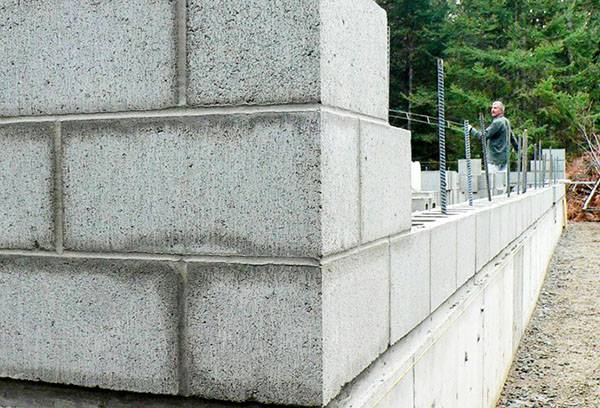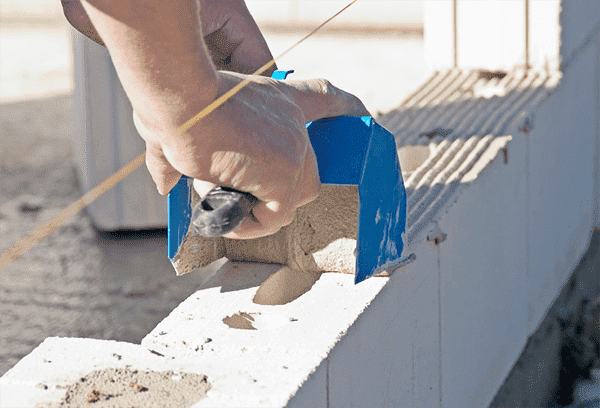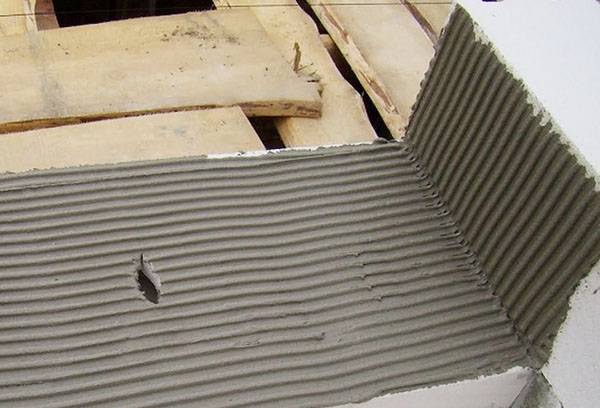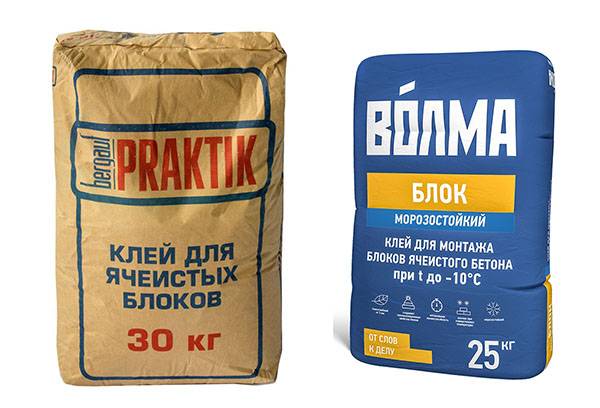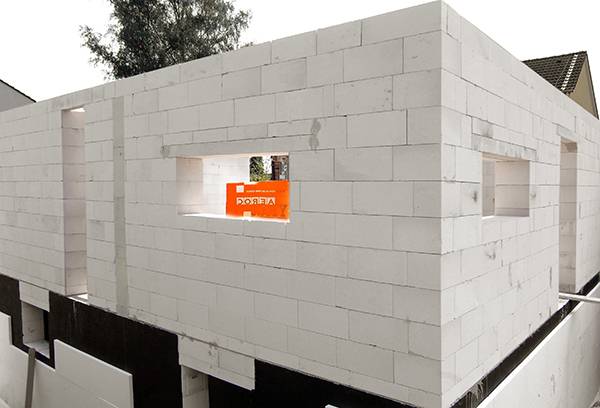What glue is used to connect foam blocks?
Content:
Over the past decades, foam blocks occupy a leading position among building materials. They are used in the construction of residential buildings and utility rooms, the construction of interior partitions, for insulation and improve sound insulation. To connect the foam concrete bricks to each other, glue is used for foam blocks, which not only provides strong and durable adhesion, but also allows you to fully preserve all the positive qualities of aerated concrete.
What glue is better than cement mortar?
Foam blocks are made of foam concrete, which is a mixture of cement, sand and water with the addition of a foaming agent. As a result of such a connection, a lightweight cellular material is obtained, which is used for the construction of various buildings and structures. Foam block differs from brick in structure, size, weight. The laying technology of this material is also different from the construction of a brick wall, therefore certain requirements are imposed on the composition used to connect the individual elements.
The fact is that the thermal insulation properties of foam concrete are much higher than these indicators for cement mortar. Layers of cement with a thickness of 1-1.5 cm make the structure easily blown. As a result, it is necessary to arrange additional thermal insulation. A special adhesive composition with additives that increase elasticity and water resistance forms a thin (3 mm) sealed layer and successfully solves this problem.
Glue for foam blocks has a number of advantages that distinguish it from cement mortar.
- High bond strength.
- Fast hardening of the adhesive reduces the construction time.
- The impossibility of mold and mildew.
- With a sharp temperature difference, the adhesive layer does not crack and does not collapse.
- Convenience and ease of use of the adhesive.
- Profitability - glue is more expensive than cement, but it will be needed several times less, as a result of which the cost of masonry will be lower.
Important!
The cement composition contains a large amount of water, which, when the unit is installed, begins to be absorbed into the porous structure. To avoid this, you have to treat each row with a special water-repellent primer, which takes extra time and money.
The composition and specifications of the adhesive
Any adhesive used for bonding foam blocks contains cement, sand and various additives that improve the characteristics of the product and enhance one or another property of the adhesive.
The composition of the dry mixture contains the following components:
- finely crushed quartz sand - allows you to make a seam with a width of not more than two millimeters;
- Portland cement - provides the highest bond strength and quick hardening of the adhesive;
- additives from polymers - make the composition more flexible and pliable, able to penetrate the most inaccessible crevices and cavities, always present on the surface of the foam block; a plastic seam prevents the formation of cracks during a sharp temperature drop;
- additives that improve the water-repellent properties of the adhesive and prevent the formation of mold.
On the market of building materials you can find summer and winter glue. The first type of adhesive contains white cement and is used at an air temperature of at least + 5 ° C. Winter glue due to antifreeze additives is able to work even at a temperature of -30 ° C.
Glue for foam blocks in the form of a dry mixture, packaged in 25 kg bags, is sold.
Glue consumption per 1 m3
Many manufacturers indicate on the package how much adhesive is needed for 1 m2 masonry. Before you buy glue, you need to study the label and calculate how many bags will be needed to build a particular object.
Moreover, one should not forget that the consumption rates indicated by the manufacturer are averaged, and the actual figures are added up depending on many circumstances, such as:
- builder skill level;
- air temperature during masonry work;
- flatness of the surface of the foam block;
- number and thickness of joints.
Typically, the standard glue consumption for a layer thickness of 1 mm is 1.3–1.5 kg per 1 m2 masonry area. To make the joint strong and reliable, the adhesive layer should have a thickness of 3-5 mm. So, if you take the maximum, then at 1 m2 6.5-7.5 kg of the mixture will go.
Based on the fact that the height of the standard foam block is about 20 cm, you can calculate the number of layers in a cubic meter. There will be five of them. The maximum amount of glue required for masonry is 1 m3 walls, will be 32.5-37.5 kg, that is, one and a half bags of dry mix.
Tip
After masonry is completed, it is recommended to re-glue the external seams with glue. It is necessary to provide for this and buy glue with a margin.
Manufacturers and prices
All adhesives used to connect the blocks have approximately the same composition. The difference is only in the proportion between the filler and the polymer additives. Therefore, when choosing an adhesive for foam blocks, special attention should be paid to the temperature at which the composition is used and whether it is suitable for construction in specific conditions.
Experts advise when buying glue to follow the rules:
- Do not buy a suspiciously cheap product;
- give preference to trusted manufacturers;
- take into account the season of work;
- take the mixture with a margin.
Here are some of the most popular adhesive formulations made by well-known manufacturers and have earned positive reviews from specialists. The prices are per package (25 kg).
- Praktik bergauf (winter) - 274 rubles;
- Aeroc - 179 rubles;
- Ceresit CT 21 -265 rubles;
- Founces Selfform T 112 - 167 rubles;
- Praktik bergauf - 165 rubles;
- Volma - 190 rubles.
Many experts recognized the glue “Founded Selfform” as the best adhesive composition for working in the summer. Among the frost-resistant, winter adhesive with the name Aeroc has the best characteristics. The compound formed with this product is resistant to temperature changes. Working with the composition is simple and convenient, since the glue does not set immediately and there is time to adjust the location of the block.
How to put foam block on glue?
Before starting the construction of the wall of foam blocks, it is necessary to properly prepare the adhesive composition. On the packaging with glue there is a detailed instruction, which should be followed when combining glue powder with water.
To prepare a high-quality solution without lumps and clots, it is better to use a construction mixer with a special nozzle in the form of a butterfly. As a container for mixing, you can take an ordinary bucket.
After two hours from the moment of preparation, the glue will gradually thicken and solidify, therefore it is advisable to prepare as much mixture at a time as you need for a two-hour work. Of course, you can dilute the thickened glue with a small amount of water, but the quality of the product will noticeably decrease, since the proportions between the components will be violated.
Important!
The preparation of glue from a dry mixture requires exact observance of the ratio of the amount of water and powder specified in the instructions.
Before starting masonry, the necessary marking must be carried out. To do this, foam blocks are placed at the corners of the future building and a fishing line is pulled between them. The upper part of the block must be located strictly level.
The first row of blocks is laid on the foundation with a cement-sand mortar and only starting from the second row use an adhesive mixture. If there is such an opportunity, it is better to choose blocks with a flat surface, without deep depressions and bulges. This will make a thinner seam. Too rough surface can be sanded. Before laying, blow dust off the unit and remove small debris.
Apply glue better with a notched trowel. With uniform smooth movements, they glue the upper and lateral sides of the foam block with glue, removing the remains in the bucket. The layer thickness should be 2-3 mm. In order for the block to smoothly fall into place, it can be gently corrected with a rubber mallet.
Important!
It is necessary to check the verticality of the wall and the evenness of the masonry after gluing every 3-4 foam blocks.
The glue begins to harden 15 minutes after application. If something went wrong, you can still fix the problem within a quarter of an hour.
If you decide to build a house from foam blocks, you need to pay special attention to the choice of glue. After all, the quality and durability of the building will depend on the tightness, strength and water resistance of the connecting seam.
